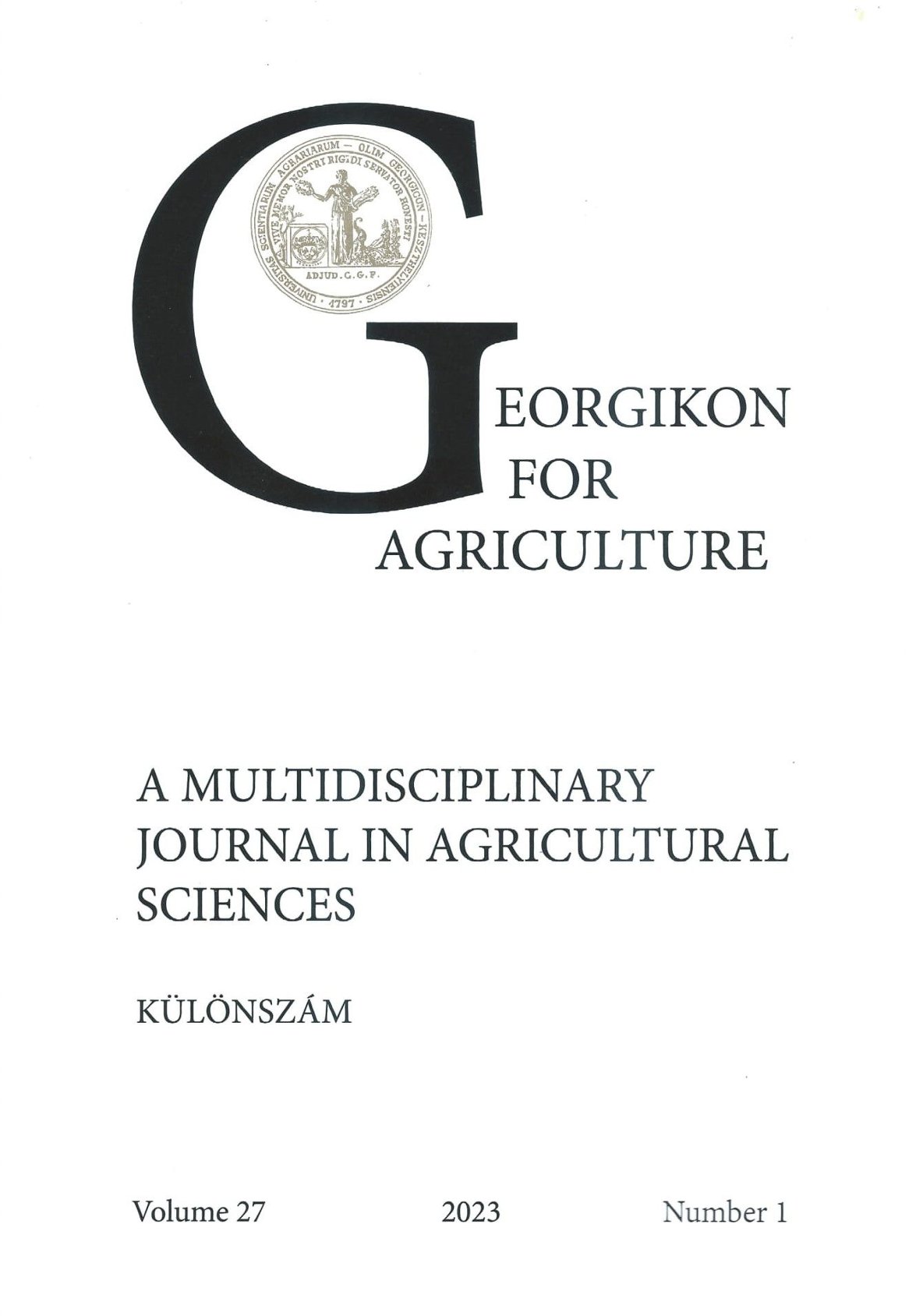Complex proteomic analysis of furmint grapes infected with Botrytis cinerea
Keywords:
Botrytis cinerea, Furmint, grapevine, Tokaj, noble rotAbstract
Under optimal microclimatic and climatic conditions, as well as suitable soil characteristics in the Tokaj-Hegyalja wine region, Botrytis cinerea is of unique benefit in the production of Furmint aszú wine. The aim of our research was a complex proteomic study of grapes at different stages of ripening. We analysed berry samples collected from outside in which Furmint proteins were present, as well as intracellular and extracellular proteins of the fungus B. cinerea, which colonises the berries. The Kruskal–Wallis test revealed significant differences between samples at different stages of noble rot, both in terms of grape protein intensities and fungal protein intensities. In the case of fungal proteins, a significant difference between the intensity data of the samples was found when comparing fungi grown on grape berries with that of grown on agar medium. In all cases, the type of medium (artificial agar medium or grape berries) had a significant effect on the expression of fungal proteins, which was also true for the majority of grape proteins. The vast majority of the ANOVA and Kruskal–Wallis tests revealed significant differences for each protein, so that the stage of noble rot and the nature of the medium had a detectable effect on the majority of the proteins. The majority of grape proteins were produced in decreasing amounts as the grapes progressed through the senescence period, while the production of most of the fungal proteins increased over the same period.
References
Boddy, L. 2015. Pathogens of autotrophs. Pages 245–292 in: The fungi. 3rd ed. Watkinson, S.C., Boddy, L., and Money, N.P. (eds) Elsevier, Waltham, MA.
Fillinger, S., and Elad, Y. 2016. Botrytis - the Fungus, the Pathogen and its Management in Agricultural Systems. Springer International Publishing
Hegyi-Kaló, J., Hegyi, I. Á., Gem, J., Zsófi, Zs., Pálfi, X., and Váczy, Z. K. 2020. Physico-Chemical Characteristics and Culturable Microbial Communities of Grape Berries Change Strongly during Noble Rot Development. Plants 9(12). 1809.
Naár, Z. and Szarvas, J. 2012. Oenological Microbiology. Eszterházy Károly College, Printing House, Eger 196.
Szám, D., Pogány, M. and Takács, A. P. 2022a. Analysis of the extracellular protein network of Botrytis cinerea by mass spectrometry, statistical and network theory methods. Georgikon for Agriculture 26(1). 138-146.
Szám, D., Pogány, M. and Takács, A. P. 2022b. Proteomic analysis of extracellular proteins of Botrytis cinerea grown on Furmint grapes. In: Pepó, P. (ed) (2022) Innovative scientific workshops in Hungarian agricultural higher education EFOP-3.6.3.-VEKOP-16- 2017-00008: Collection of student scientific publications. University of Debrecen 252–261.
Vincent, D., Wheatley, M. D. and Cramer, G. R. 2006. Optimization of protein extraction and solubilization for mature grape berry clusters. Electrophoresis 27. 1853-1865.
Downloads
Published
Issue
Section
License
Copyright (c) 2023 Szám Dorottya, Pogány Miklós, Hetesi Zsolt, Takács András

This work is licensed under a Creative Commons Attribution-NonCommercial-NoDerivatives 4.0 International License.
Cikkre a Creative Commons 4.0 standard licenc alábbi típusa vonatkozik: CC-BY-NC-ND-4.0. Ennek értelmében a mű szabadon másolható, terjeszthető, bemutatható és előadható, azonban nem használható fel kereskedelmi célokra (NC), továbbá nem módosítható és nem készíthető belőle átdolgozás, származékos mű (ND). A licenc alapján a szerző vagy a jogosult által meghatározott módon fel kell tüntetni a szerző nevét és a szerzői mű címét (BY).




